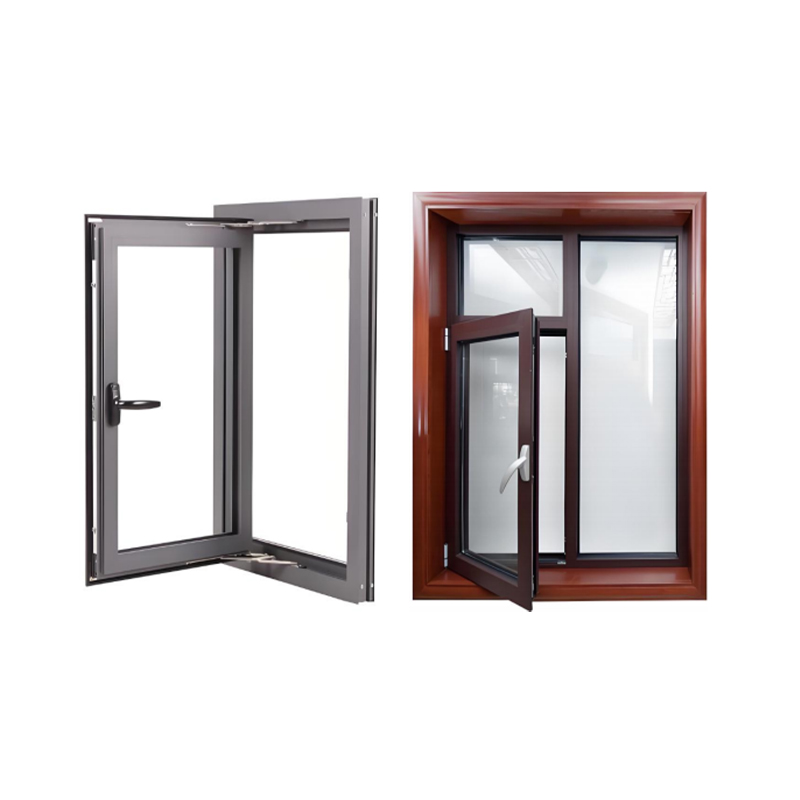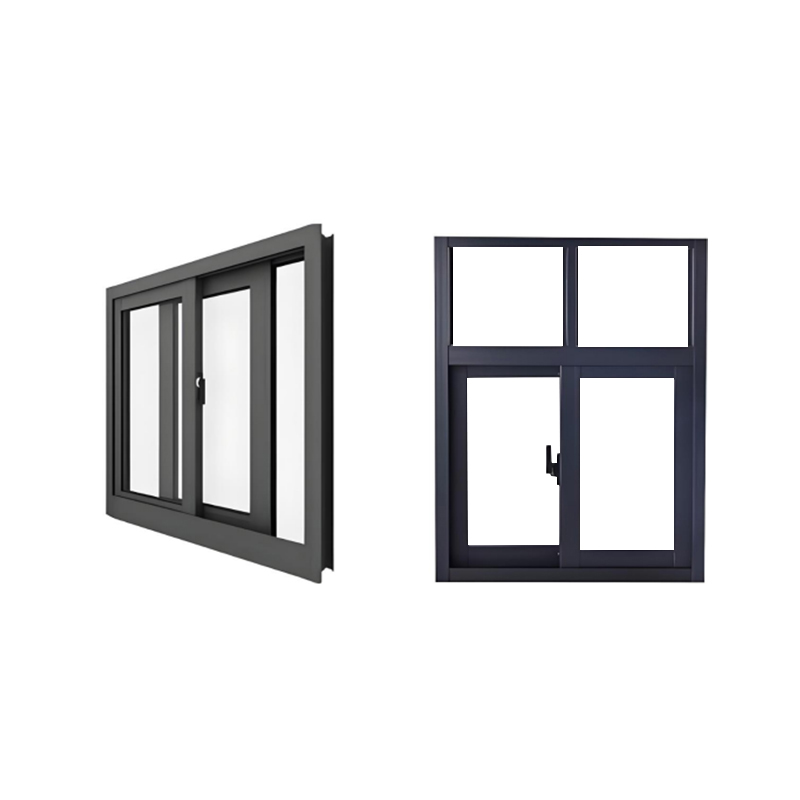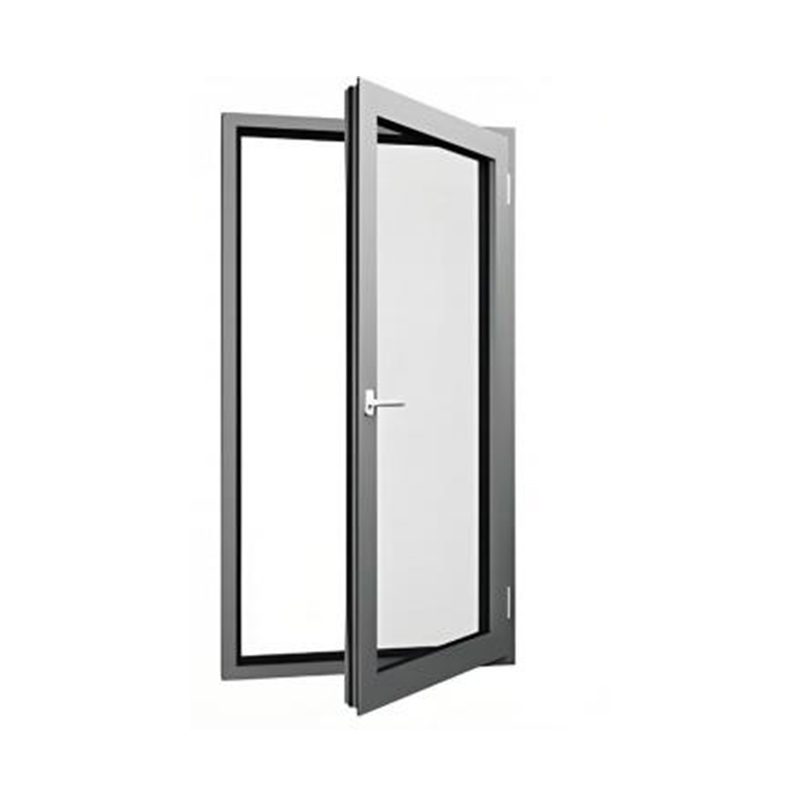How do level-out windows extend the visual boundaries of a space?
Release Time : 2025-08-20
In modern architectural design, windows have long transcended simple functions of light and ventilation, becoming crucial media connecting interiors with nature and shaping spatial perception. Level-out windows, with their unique proportions and expansiveness, have become a powerful tool for architects and designers to create expansive views and a sense of fluidity. More than just a window, they are a form of visual language. Through ingenious design techniques, they effectively extend the visual boundaries of a space, giving limited interiors the appearance of infinite expanse.
1. Horizontal Extension: Breaking the Confined Sense of Walls
The most striking feature of level-out windows is their long, horizontal design. They typically extend horizontally along the wall, spanning multiple bays or even running the entire length of the wall. This layout breaks the "columnar division" of traditional vertical windows, softening the confined feel of the wall and allowing the view to flow naturally horizontally. When standing indoors, the eye extends to the sides along the length of the window, as if passing through the glass and becoming one with the distant landscape. Whether it's the city skyline, the distant mountain outlines, or the lush greenery of the courtyard, these long windows "flatten" and spread out before your eyes, creating a visual effect that unfolds like a slowly unfolding scroll, significantly expanding the horizontal perception of the space.
2. Low Window Sill Design: Blurring the Boundary Between Indoor and Outdoor
Level-out windows feature low sills, even floor-to-ceiling, extending the glass surface close to the ground. This design eliminates the visual obstruction of traditional window sills, blurring the height difference between indoor and outdoor, creating the illusion that the space "flows" directly into the outdoors. Combining a minimalist aesthetic with slender frames and large expanses of insulating glass, level-out windows minimize visual distractions and provide clear, unobstructed views. This pushes the boundaries of the interior space further into the distance, creating an open and transparent living experience even within limited floor space.
3. Introducing Continuous Light and Shadow to Enhance the Sense of Spatial Flow
Level-out windows follow the sun's movement throughout the day, sweeping light into the interior. The slanting light of early morning, the direct sunlight of midday, and the fading glow of dusk all create continuously shifting paths of light and shadow on the floor and walls, imbuing the space with a dynamic vitality. This horizontal flow of light and shadow further enhances the spatial expansiveness, transforming the room from a static box into a fluid space in sync with the rhythms of nature. Especially in minimalist spaces, light and shadow become the most moving decorative elements, quietly extending the boundaries of vision.
4. Structure and Performance: Providing Solid Support for "Transparency"
Level-out windows achieve transparent designs across large spans and expanses thanks to their durable structure and superior performance:
High-strength aluminum alloy profiles resist deformation and corrosion, ensuring the large-scale windows remain stable even in strong winds and heavy rain.
The multi-layer sealing design (gaskets + hardware locks) combined with the insulating glass effectively isolates wind, rain, dust, and noise, enhancing indoor tranquility. They also provide excellent thermal insulation, ensuring warmth in winter and coolness in summer, while also reducing energy consumption.
A multi-point locking system and anti-theft design enhance theft resistance. The inward-opening and inward-tilting modes offer both ventilation and safety, minimizing the risk of falling objects, making them particularly suitable for families with children.
5. Flexible Opening, Freely Define Space
Level-out windows typically open horizontally or inward, leaving no space occupied when opened and maintaining a smooth flow of movement. Users can customize the opening direction (inward, outward, or inward) to suit their needs, flexibly adjusting ventilation to suit different apartment types and climate conditions.
With their horizontally extended form, low sill design, continuous light and shadow, and minimalist structure, level-out windows successfully break the visual constraints of traditional walls, seamlessly connecting indoor and outdoor spaces. More than just a window, they function as a visual extender, making small spaces appear larger, enclosed spaces transparent, and allowing residents to experience the vastness of the world within their small spaces. In contemporary design, which pursues openness and naturalness, level-out windows are redefining the boundaries of space with their unique aesthetics and functionality.
1. Horizontal Extension: Breaking the Confined Sense of Walls
The most striking feature of level-out windows is their long, horizontal design. They typically extend horizontally along the wall, spanning multiple bays or even running the entire length of the wall. This layout breaks the "columnar division" of traditional vertical windows, softening the confined feel of the wall and allowing the view to flow naturally horizontally. When standing indoors, the eye extends to the sides along the length of the window, as if passing through the glass and becoming one with the distant landscape. Whether it's the city skyline, the distant mountain outlines, or the lush greenery of the courtyard, these long windows "flatten" and spread out before your eyes, creating a visual effect that unfolds like a slowly unfolding scroll, significantly expanding the horizontal perception of the space.
2. Low Window Sill Design: Blurring the Boundary Between Indoor and Outdoor
Level-out windows feature low sills, even floor-to-ceiling, extending the glass surface close to the ground. This design eliminates the visual obstruction of traditional window sills, blurring the height difference between indoor and outdoor, creating the illusion that the space "flows" directly into the outdoors. Combining a minimalist aesthetic with slender frames and large expanses of insulating glass, level-out windows minimize visual distractions and provide clear, unobstructed views. This pushes the boundaries of the interior space further into the distance, creating an open and transparent living experience even within limited floor space.
3. Introducing Continuous Light and Shadow to Enhance the Sense of Spatial Flow
Level-out windows follow the sun's movement throughout the day, sweeping light into the interior. The slanting light of early morning, the direct sunlight of midday, and the fading glow of dusk all create continuously shifting paths of light and shadow on the floor and walls, imbuing the space with a dynamic vitality. This horizontal flow of light and shadow further enhances the spatial expansiveness, transforming the room from a static box into a fluid space in sync with the rhythms of nature. Especially in minimalist spaces, light and shadow become the most moving decorative elements, quietly extending the boundaries of vision.
4. Structure and Performance: Providing Solid Support for "Transparency"
Level-out windows achieve transparent designs across large spans and expanses thanks to their durable structure and superior performance:
High-strength aluminum alloy profiles resist deformation and corrosion, ensuring the large-scale windows remain stable even in strong winds and heavy rain.
The multi-layer sealing design (gaskets + hardware locks) combined with the insulating glass effectively isolates wind, rain, dust, and noise, enhancing indoor tranquility. They also provide excellent thermal insulation, ensuring warmth in winter and coolness in summer, while also reducing energy consumption.
A multi-point locking system and anti-theft design enhance theft resistance. The inward-opening and inward-tilting modes offer both ventilation and safety, minimizing the risk of falling objects, making them particularly suitable for families with children.
5. Flexible Opening, Freely Define Space
Level-out windows typically open horizontally or inward, leaving no space occupied when opened and maintaining a smooth flow of movement. Users can customize the opening direction (inward, outward, or inward) to suit their needs, flexibly adjusting ventilation to suit different apartment types and climate conditions.
With their horizontally extended form, low sill design, continuous light and shadow, and minimalist structure, level-out windows successfully break the visual constraints of traditional walls, seamlessly connecting indoor and outdoor spaces. More than just a window, they function as a visual extender, making small spaces appear larger, enclosed spaces transparent, and allowing residents to experience the vastness of the world within their small spaces. In contemporary design, which pursues openness and naturalness, level-out windows are redefining the boundaries of space with their unique aesthetics and functionality.







